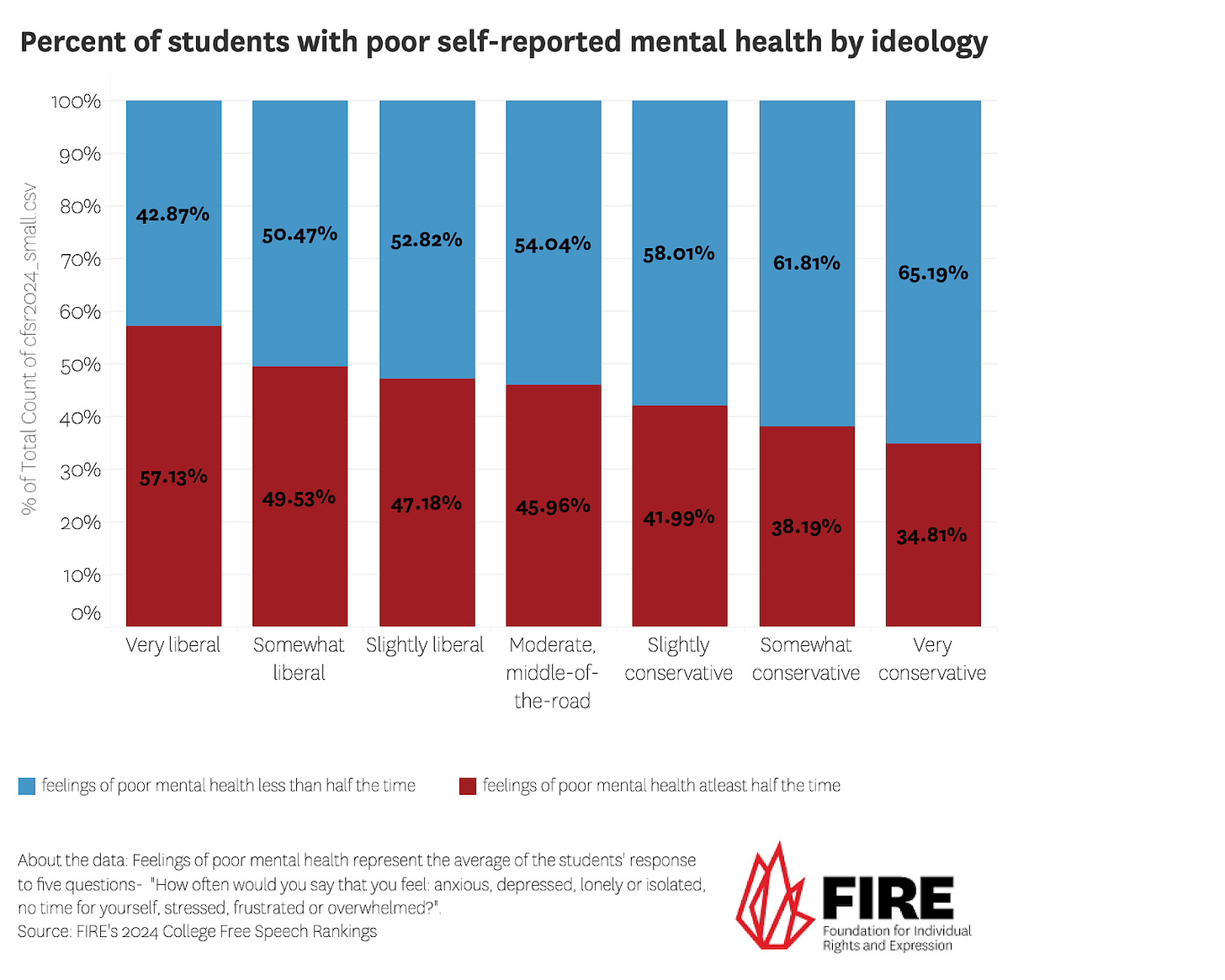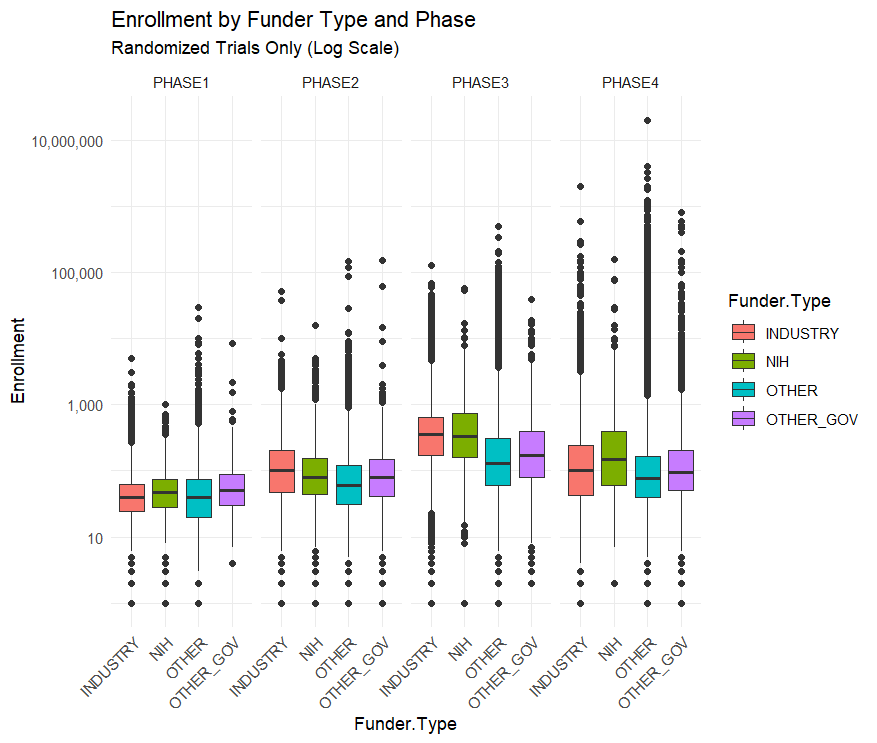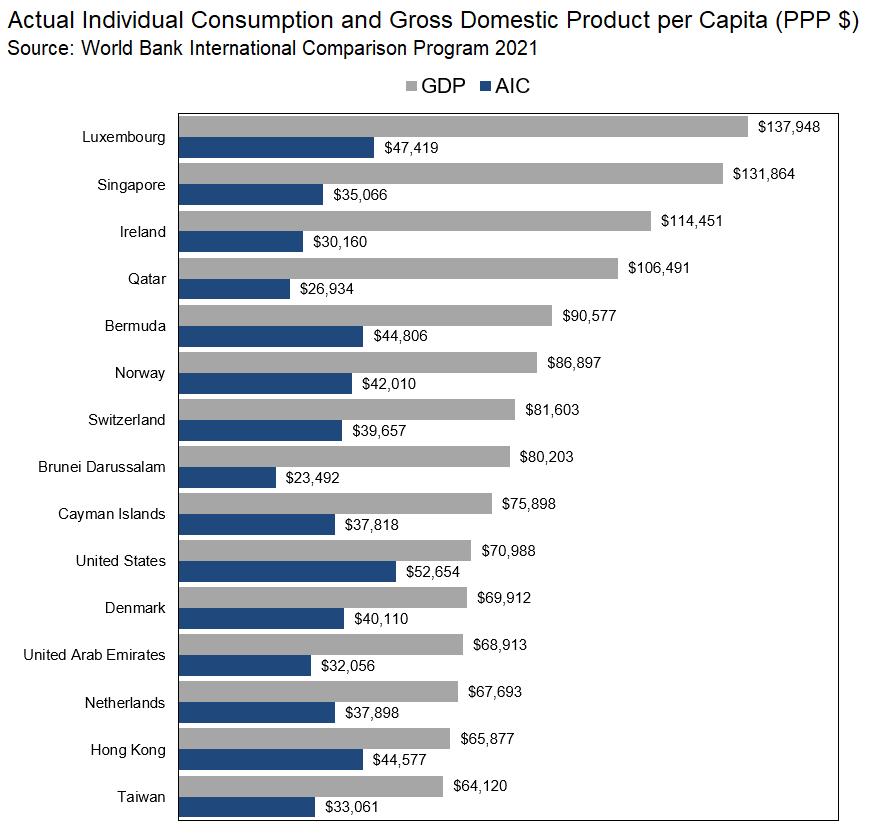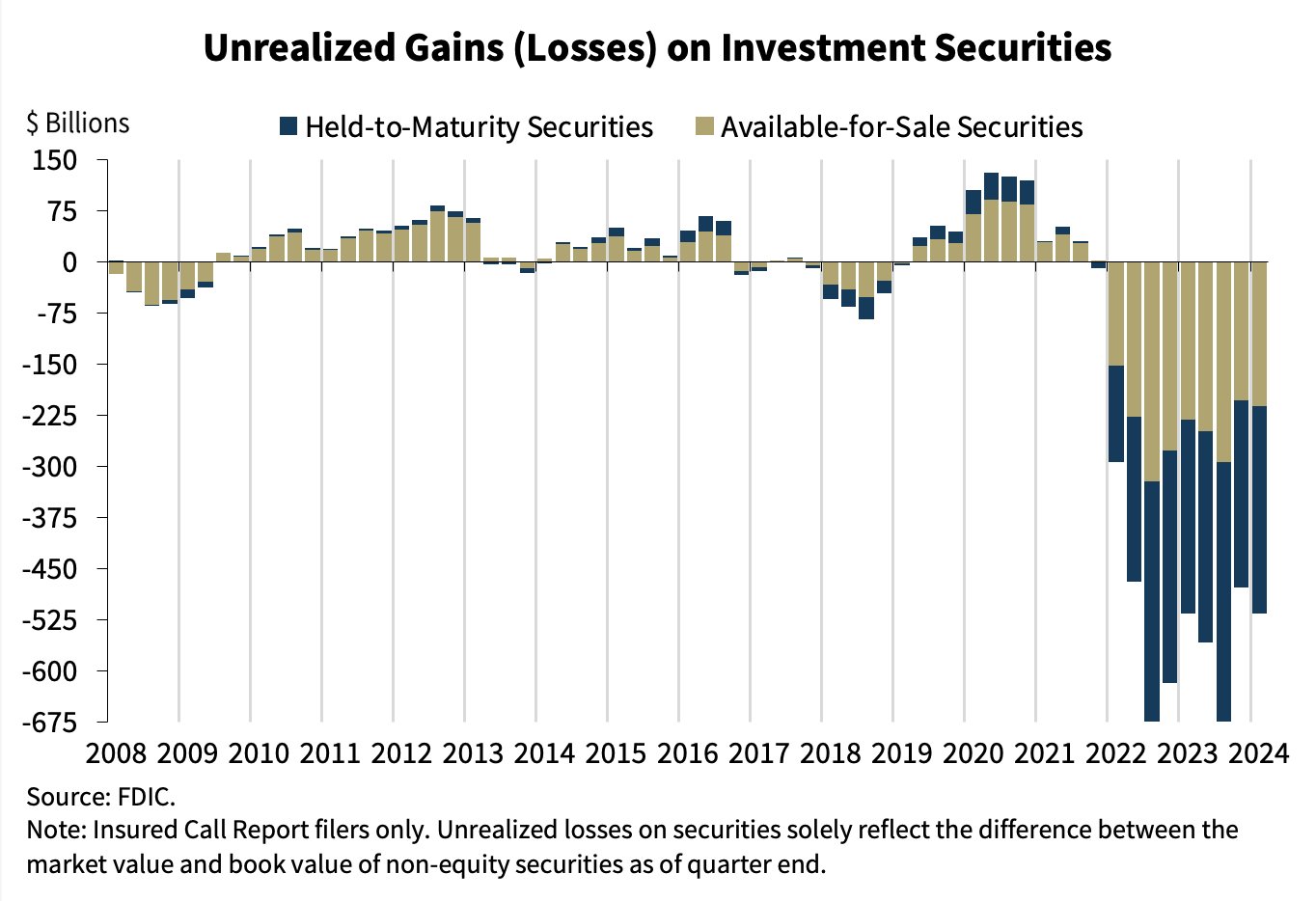Category: Data Source
How many hottest days of the year? (so far)
- The average number of days in a year which can be called ‘hottest day of the year so far’ is 20.0
- If we want to restrict the number of ‘noteworthy hottest days of the year so far’ to 3/year, we can restrict noteworthiness to days which are at least 20˚C and at least 1.6˚C hotter than the previous hottest day
- The places which set the most ‘hottest day of the year so far’ records are in the south east of England
Here is the full post by Eliot Fosong, via Sam Enright.
The NIH Doesn’t Fund Small Crappy Trials
A nice catch by Max at Maximum Progress:
[A common critique] is that the NIH funds too many “small crappy trials.” That quote is from a FDA higher up, but the story has been repeated by many others…I downloaded all of the clinical trial data from ClinicalTrials.gov to find out….The median NIH funded trial has 48 participants while the median industry funded trial has 67. The average NIH funded trial has 288 participants while the average industry trial has 335 and the average “Other” funded trial (mostly universities and the associated hospitals) has 923 participants.
By median or by average NIH trials are the smallest out of all the funders. This seems to confirm the “small crappy trials” narrative
…This narrative is reversed, however, when you split up the trials by phase.
Across all trials NIH funded ones are the smallest, but within each phase NIH trials are the largest or second largest. Their overall small enrollment average is just due to the fact that they fund more Phase I trials than Phase III. But NIH Phase I trials have a bigger sample size than industry funded trials on average.
This is an example of Simpson’s Paradox in the wild!
Arguing that the NIH should stop funding unusually small trials is easy but arguing that they should shift from funding the Phase I trials closest to basic research towards later stage trials is less clear.
The NIH’s clinical trial strategy is certainly not perfect and improving it is valuable. But a systematic bias towards “small crappy trials” doesn’t really seem like it’s an important problem facing the NIH.
GDP vs. individual consumption
Here is the source tweet.
The partisanship of American inventors
Using panel data on 251,511 patent inventors matched with voter registration records containing partisan affiliation, we provide the first large-scale look into the partisanship of American inventors. We document that the modal inventor is Republican and that the partisan composition of inventors has changed in ways that are not reflective of partisan affiliation trends amongst the broader population. We then show that the partisan affiliation of inventors is associated with technological invention related to guns and climate change, two issue areas associated with partisan divide. These findings suggest that inventor partisanship may have implications for the direction of inventive activity.
Here is the full piece by Daniel Fehder, Florenta Teodoridis, Joseph Raffee, and Jino Lu. Via Kris Gulati.
Brain drain from Canada

Here is the source. Don’t forget — in the long run the policies you choose shape who is attracted to your country. So be tough, as selection matters above all else. These are not the Canadian losers we are getting.
Is broadband good for you?
Kathryn R. Johnson and Claudia Persico have a new NBER working paper on exactly that topic:
Between 2000 and 2008, access to high-speed, broadband internet grew significantly in the United States, but there is debate on whether access to high-speed internet improves or harms wellbeing. We find that a ten percent increase in the proportion of county residents with access to broadband internet leads to a 1.01 percent reduction in the number of suicides in a county, as well as improvements in self-reported mental and physical health. We further find that this reduction in suicide deaths is likely due to economic improvements in counties that have access to broadband internet. Counties with increased access to broadband internet see reductions in poverty rate and unemployment rate. In addition, zip codes that gain access to broadband internet see increases in the numbers of employees and establishments. In addition, heterogeneity analysis indicates that the positive effects are concentrated in the working age population, those between 25 and 64 years old. This pattern is precisely what is predicted by the literature linking economic conditions to suicide risk.
It seems broadband is indeed (was indeed?) good for you.
Neuroticism and the political Left
From Greg Lukianoff and Andrea Lan:
Liberal students have worse mental health than moderate and conservative students
At the extremes, 57% of very liberal students in our study reported feelings of poor mental health at least half the time, compared to just 34% of very conservative students. Let that sink in. 34% is really quite bad, but 57% is approaching a figure of 2 out of every 3 very liberal students.

The graph above shows that as students move further to the left, they are more likely to have poor mental health — suggesting that it’s not just liberal ideology that impacts mental health, but also the extremity of their beliefs. Analysis of variance (ANOVA) tests show ideology is a statistically significant predictor of mental health. Post-hoc tests demonstrate it predicts in the direction as shown: more liberal, worse mental health. So far, the data is consistent with the findings of others (Zach Goldberg and Jon Haidt using Pew Research’s data, and Gimbrone et al.), and supportive of the hypothesis that “social justice fundamentalism” can be contributing negatively to the mental health of those who adopt it.
Via the excellent Arnold Kling. I’ve been on this bandwagon for a while, it is one of the more important truths for understanding current American political discourse. I would, however, insist that in this context the word “liberal” is especially misplaced.
Bailouts Forever
When interest rates rise, the price of long-term assets falls. Consequently, when the Fed began raising interest rates in 2022, the value of bonds and mortgages dropped, causing significant accounting losses for banks heavily invested in these assets. Silicon Valley Bank went bust, for example, because depositors fled upon realizing it was holding lots of Treasury bonds.
Interest rates remain high and many banks have large unrealized losses on their books. According to the latest FDIC data (see below) unrealized losses currently total $516.5 billion, far exceeding levels seen during the 2008-2009 financial crisis. Price risk is not the same as default risk and if the banks can hold onto their assets until maturity then they will be solvent. The real danger, as with SVB, is if unrealized losses are combined with a deposit run. So far that doesn’t seem to be happening but it’s well within the realm of possibility.
In other news, Hypertext has an issue devoted to Anat Admati and Martin Hellwig’s The Banker’s New Clothes. Admati and Hellwig write:
The 2010 Dodd-Frank Act in the United States promised the end of bank bailouts and “too-big-to-fail” institutions. The European Union’s 2014 legislation for dealing with banks likely to fail was claimed to provide “a framework” to “deal with banks that experience financial difficulties without either using taxpayer money or endangering financial stability.” In November 2014, Mark Carney, at the time the governor of the Bank of England and chair of the Financial Stability Board (FSB), a body of financial regulators from around the world, announced triumphantly that an agreement about new rules for the thirty largest and most complex, “globally systemic” financial institutions would prevent bailouts in the future. Many people in politics and the media believed these claims.
Nationalism in Online Games During War
We investigate how international conflicts impact the behavior of hostile nationals in online games. Utilizing data from the largest online chess platform, where players can see their opponents’ country flags, we observed behavioral responses based on the opponents’ nationality. Specifically, there is a notable decrease in the share of games played against hostile nationals, indicating a reluctance to engage. Additionally, players show different strategic adjustments: they opt for safer opening moves and exhibit higher persistence in games, evidenced by longer game durations and fewer resignations. This study provides unique insights into the impact of geopolitical conflicts on strategic interactions in an online setting, offering contributions to further understanding human behavior during international conflicts.
That is from a new paper by Eren Bilen, Nino Doghonadze, Robizon Khubulashvili, and David Smerdon. Imagine if there is some addition Sino-Indian conflict right before the Ding vs. Gukesh WCC match…
For the pointer I thank various MR readers.
The who and how of campaign spending on Meta
Trump targets horse riding, Biden targets football, and RFK Jr. targets comedy.
Trump also can claim Ted Nugent fans, here is the full story. Via A.
Blame California?
This paper reexamines the role of social policy in the doubling of divorce rates. We demonstrate that the short-run rise in divorce rates formerly attributed to unilateral divorce solely depends on the state of California. California receives considerable weight in national analyses and adopted several policies simultaneously. When we examine the independent effects of these social policies, we find that legal abortion leads to a clear and immediate rise in divorce rates. However, legal abortion’s impact also hinges on California and may be contaminated by concurrently adopted policies. We then demonstrate that California’s influence extends to the broader unilateral divorce literature. We conclude by describing best practices to confront the challenges of simultaneous policy adoption.
That is from a recent paper by Lauren Hoehn-Velasco, Jacob Penglase, Michael Pesko, and Hasan Shahid. Via tekl.
What Went Wrong with Federal Student Loans?
At a time when the returns to college and graduate school are at historic highs, why do so many students struggle with their student loans? The increase in aggregate student debt and the struggles of today’s student loan borrowers can be traced to changes in federal policies intended to broaden access to federal aid and educational opportunities, and which increased enrollment and borrowing in higher-risk circumstances. Starting in the late 1990s, policymakers weakened regulations that had constrained institutions from enrolling aid-dependent students. This led to rising enrollment of relatively disadvantaged students, but primarily at poor-performing, low-value institutions whose students systematically failed to complete a degree, struggled to repay their loans, defaulted at high rates, and foundered in the job market. As these new borrowers experienced similarly poor outcomes, their loans piled up, loan performance deteriorated, and with it the finances of the federal program. The crisis illustrates the important role that educational institutions play in access to postsecondary education and student outcomes, and difficulty of using broadly-available loans to subsidize investments in education when there is so much heterogeneity in outcomes across institutions and programs and in the ability to repay of students.
That is from a new NBER working paper by Adam Looney and Constantine Yannellis.
The decline in Native American wealth
I had not realized how negative were the effects of the 1887 Dawes Act, which broke up many Native American reservations. Before 1912:
There was a nontrivial number of relatively wealthy superintendencies, which runs counter to the common perception of uniform poverty during this period. In 1912, the wealthiest superintendency had total per capital wealth levels above $600,000 in 2019 real terms, while total per capital wealth was just $90 in the least wealthy superintendency…
Our results suggest that, on average, Indigenous Peoples in the early twentieth century had substantial levels of wealth per capita, although there was wide diversity in wealth levels. Between 1912 and 1927, wealth per capita declined by nearly 50 percent.
Per capita indigenous wealth had been above white wealth at the beginning of the period.
Here is the AER version of the piece, by Donn. L. Feir, Maggie E.C. Jones, and Angela Redish, ungated here.
How important is “the scientific method”?
From a recently published paper by Alexander Krauss:
Using data on all major discoveries across science including all Nobel Prize and major non-Nobel Prize discoveries, we can address the question of the extent to which “the scientific method” is actually applied in making science’s groundbreaking research and whether we need to expand this central concept of science. This study reveals that 25% of all discoveries since 1900 did not apply the common scientific method (all three features)—with 6% of discoveries using no observation, 23% using no experimentation, and 17% not testing a hypothesis. Empirical evidence thus challenges the common view of the scientific method.
File under “In favor of methodological pluralism.” Via Zhengdong Wang.
Is the internet bad for you?
A global, 16-year study1 of 2.4 million people has found that Internet use might boost measures of well-being, such as life satisfaction and sense of purpose — challenging the commonly held idea that Internet use has negative effects on people’s welfare.
“It’s an important piece of the puzzle on digital-media use and mental health,” says psychologist Markus Appel at the University of Würzburg in Germany. “If social media and Internet and mobile-phone use is really such a devastating force in our society, we should see it on this bird’s-eye view [study] — but we don’t.” Such concerns are typically related to behaviours linked to social-media use, such as cyberbullying, social-media addiction and body-image issues. But the best studies have so far shown small negative effects, if any2,3, of Internet use on well-being, says Appel.
From separate Gallup polls:
Pryzbylski and his colleagues analysed data on how Internet access was related to eight measures of well-being from the Gallup World Poll, conducted by analytics company Gallup, based in Washington DC. The data were collected annually from 2006 to 2021 from 1,000 people, aged 15 and above, in 168 countries, through phone or in-person interviews. The researchers controlled for factors that might affect Internet use and welfare, including income level, employment status, education level and health problems.
…The team found that, on average, people who had access to the Internet scored 8% higher on measures of life satisfaction, positive experiences and contentment with their social life, compared with people who lacked web access. Online activities can help people to learn new things and make friends, and this could contribute to the beneficial effects, suggests Appel.
Do note that in these latter data sets women ages 15-24 still are worse off from internet access.
Here is the Nature piece, via Clara B. Jones.


